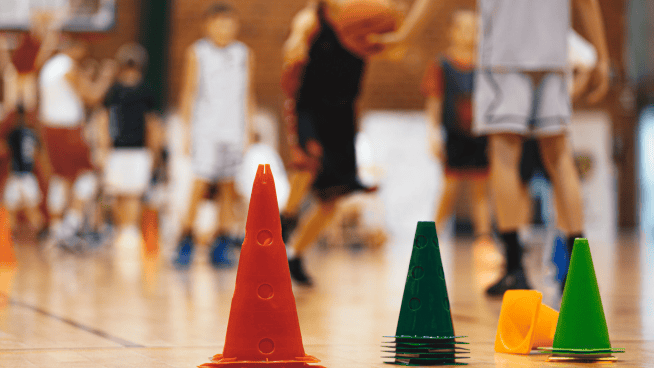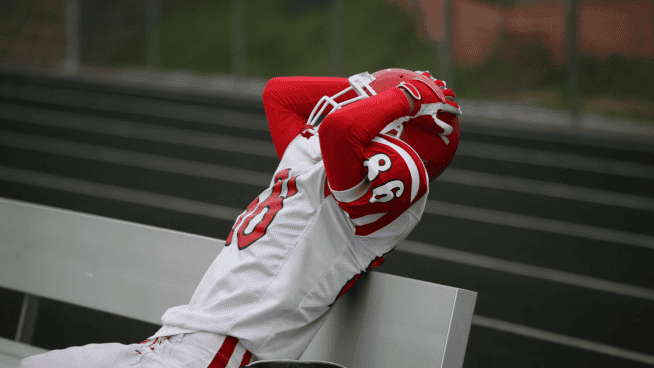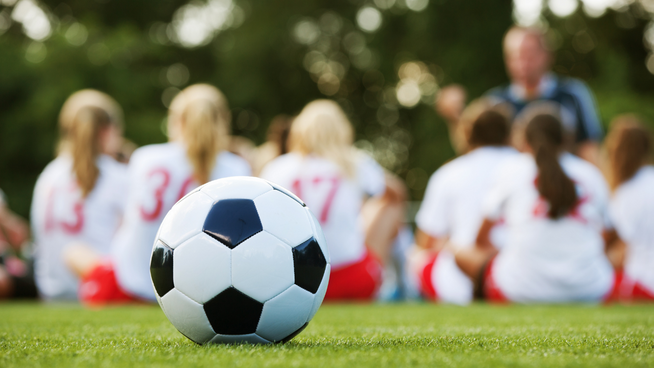Coaching Tips for Middle School Track and Field Athletes
Coaching any sport takes time, dedication, and continued personal growth. Coaching is not for everyone, but with planning, organization, and a willingness to learn, it is a skill that can be fine-tuned. Coaching track and field at the middle school level certainly can provide a host of challenges. You may have years of experience or a lifelong love of the sport, but these traits alone won’t equal success as a coach or your team.
Track and field are often one of the most accessible sports. Equipment needs for entry are minimal – a pair of shoes. Often for athletes joining the middle school track and field team, this may be their first foray into an organized school sport. This is an opportunity for them to be an athlete and an opportunity to develop skills, learn how to be part of a team, self-organization, and work with a coach.
As a coach for a middle school track and field program you have three main objectives: teach the athletes the foundations of the sport, expose them to a wide range of track and field events, and engage the athlete – make them want to stay in the sport.
And as a middle school track and field coach, you must be a master at communication. You need to set clear goals and expectations for your athletes. You will also need to communicate with parents. These young athletes will rely on and friends and family for transportation to and from practices and meets. Be sure parents understand times and locations for practices and meets. And be sure they understand the needs and expectations of their track and field athlete including uniform and equipment needs, commitment time, and what should be done outside of the team to fine-tune skills.
Your role as the coach of a middle school track and field team should focus on the following:
Establish the Track and Field Foundation
There is a lot of ground to cover and little time to do so. Often practices are short as well as the attention span of your athlete. Middle schoolers have a lot going on and you need to keep your practices, drills, and talks short, focused, and fun. Hard work is definitely important here, but this can be done in engaging ways to keep the interest of your athletes. It should be a balance of strength, skill work, and some “play” time that serves as team building and conditioning. It may be worth setting aside the last portion of practice, or one practice day a week for fun. This could include games such as capture the flag, ultimate frisbee, an obstacle course, or spike ball.
Other ways to work on some foundational skills include:
- Get up and go drills from various start positions. Have your athlete start flat on their stomach, kneel, cross-legged, on back, tuck and roll, push-up position, two-point, two-point deep crouch. When signaled, they explode up, sprint for a set distance, and then work on controlled deceleration.
- Accelerations relay races in small teams (3-5 athletes). Choose a distance (10-30 yards) on the turf. Pick a start position and on your signal, they begin. The athlete tags the outgoing runner’s hand and continues until reaching the finish line. The coach uses the time between races to review acceleration cues and feedback between races.
- Skip races, hop races and gallops over 10-15 mini hurdles for a time as you observe mechanics.
Focus On Athlete Development, Not the Events
This is a time of building the foundational skills of your athletes. While winning meets and events is an ultimate goal of a track coach, this should not be the main focus for middle school-aged athletes. It is important at this phase to instruct the track and field athletes on the rules of the game, key movement patterns, and reinforcing drills so they can explore movement patterns. Have your athletes try out events such as shot put, javalon, discus or pole vaulting – not just sprinting. This is often a period of physical development in young men and women and while they may have been an active child athletes, their bodies may need time to improve strength, function, and prevent injuries.
Rhythm Before Speed
There is an old saying: learn to walk before you run. This concept can be made when it comes to track and field. Developing a proper rhythm along with gait mechanics is far more important than speed. Once your track and field athlete understands how to properly move, speed can be applied. It is far more important to have this done slow and steady, versus fast and messy. You want your athlete to look good and move fast, not just fast. As your athlete ages and their developing bodies can better adapt to the neurological inputs, speed will come along.
There are four points to look for and work on with rhythm:
- Legs that switch (remove and replace) at the same time.
- Arms that move up and down contributing to the movement.
- An ability to run at different tempos or shift through first gear to the fifth without any coordination issues.
- Forward lean and a long spine.
You can accomplish this by manipulating running tempos using animal references for different speeds:
- Cheetah = sprint
- Deer = fast-paced run
- Horse = easy run
- Elephant = race walk
- Dog = jog
- Turtle = walk
As a coach, you could mix and match the animals so your athlete can adjust speeds while working on rhythm mechanics. For example, have an athlete perform the following:
- Dog 10 seconds
- Cheeta 10 seconds
- Horse 20 seconds
- Cheeta 5 seconds
- Turtle 1 minute
Remember, this is an important time to develop a young track and field athlete foundation. If you instill hard work, expose them to all elements of the sport, and develop basic skills, it can set up the athlete for success in high school, college, or beyond. A middle school athlete who moves into high school with a solid foundation will be more coachable and safely advance through the sport. Your job as a coach is to build the framework on which future coaches can build upon. For additional lessons, resources, and tools visit NFHS.org
RECOMMENDED FOR YOU
Coaching Tips for Middle School Track and Field Athletes
Coaching any sport takes time, dedication, and continued personal growth. Coaching is not for everyone, but with planning, organization, and a willingness to learn, it is a skill that can be fine-tuned. Coaching track and field at the middle school level certainly can provide a host of challenges. You may have years of experience or a lifelong love of the sport, but these traits alone won’t equal success as a coach or your team.
Track and field are often one of the most accessible sports. Equipment needs for entry are minimal – a pair of shoes. Often for athletes joining the middle school track and field team, this may be their first foray into an organized school sport. This is an opportunity for them to be an athlete and an opportunity to develop skills, learn how to be part of a team, self-organization, and work with a coach.
As a coach for a middle school track and field program you have three main objectives: teach the athletes the foundations of the sport, expose them to a wide range of track and field events, and engage the athlete – make them want to stay in the sport.
And as a middle school track and field coach, you must be a master at communication. You need to set clear goals and expectations for your athletes. You will also need to communicate with parents. These young athletes will rely on and friends and family for transportation to and from practices and meets. Be sure parents understand times and locations for practices and meets. And be sure they understand the needs and expectations of their track and field athlete including uniform and equipment needs, commitment time, and what should be done outside of the team to fine-tune skills.
Your role as the coach of a middle school track and field team should focus on the following:
Establish the Track and Field Foundation
There is a lot of ground to cover and little time to do so. Often practices are short as well as the attention span of your athlete. Middle schoolers have a lot going on and you need to keep your practices, drills, and talks short, focused, and fun. Hard work is definitely important here, but this can be done in engaging ways to keep the interest of your athletes. It should be a balance of strength, skill work, and some “play” time that serves as team building and conditioning. It may be worth setting aside the last portion of practice, or one practice day a week for fun. This could include games such as capture the flag, ultimate frisbee, an obstacle course, or spike ball.
Other ways to work on some foundational skills include:
- Get up and go drills from various start positions. Have your athlete start flat on their stomach, kneel, cross-legged, on back, tuck and roll, push-up position, two-point, two-point deep crouch. When signaled, they explode up, sprint for a set distance, and then work on controlled deceleration.
- Accelerations relay races in small teams (3-5 athletes). Choose a distance (10-30 yards) on the turf. Pick a start position and on your signal, they begin. The athlete tags the outgoing runner’s hand and continues until reaching the finish line. The coach uses the time between races to review acceleration cues and feedback between races.
- Skip races, hop races and gallops over 10-15 mini hurdles for a time as you observe mechanics.
Focus On Athlete Development, Not the Events
This is a time of building the foundational skills of your athletes. While winning meets and events is an ultimate goal of a track coach, this should not be the main focus for middle school-aged athletes. It is important at this phase to instruct the track and field athletes on the rules of the game, key movement patterns, and reinforcing drills so they can explore movement patterns. Have your athletes try out events such as shot put, javalon, discus or pole vaulting – not just sprinting. This is often a period of physical development in young men and women and while they may have been an active child athletes, their bodies may need time to improve strength, function, and prevent injuries.
Rhythm Before Speed
There is an old saying: learn to walk before you run. This concept can be made when it comes to track and field. Developing a proper rhythm along with gait mechanics is far more important than speed. Once your track and field athlete understands how to properly move, speed can be applied. It is far more important to have this done slow and steady, versus fast and messy. You want your athlete to look good and move fast, not just fast. As your athlete ages and their developing bodies can better adapt to the neurological inputs, speed will come along.
There are four points to look for and work on with rhythm:
- Legs that switch (remove and replace) at the same time.
- Arms that move up and down contributing to the movement.
- An ability to run at different tempos or shift through first gear to the fifth without any coordination issues.
- Forward lean and a long spine.
You can accomplish this by manipulating running tempos using animal references for different speeds:
- Cheetah = sprint
- Deer = fast-paced run
- Horse = easy run
- Elephant = race walk
- Dog = jog
- Turtle = walk
As a coach, you could mix and match the animals so your athlete can adjust speeds while working on rhythm mechanics. For example, have an athlete perform the following:
- Dog 10 seconds
- Cheeta 10 seconds
- Horse 20 seconds
- Cheeta 5 seconds
- Turtle 1 minute
Remember, this is an important time to develop a young track and field athlete foundation. If you instill hard work, expose them to all elements of the sport, and develop basic skills, it can set up the athlete for success in high school, college, or beyond. A middle school athlete who moves into high school with a solid foundation will be more coachable and safely advance through the sport. Your job as a coach is to build the framework on which future coaches can build upon. For additional lessons, resources, and tools visit NFHS.org










